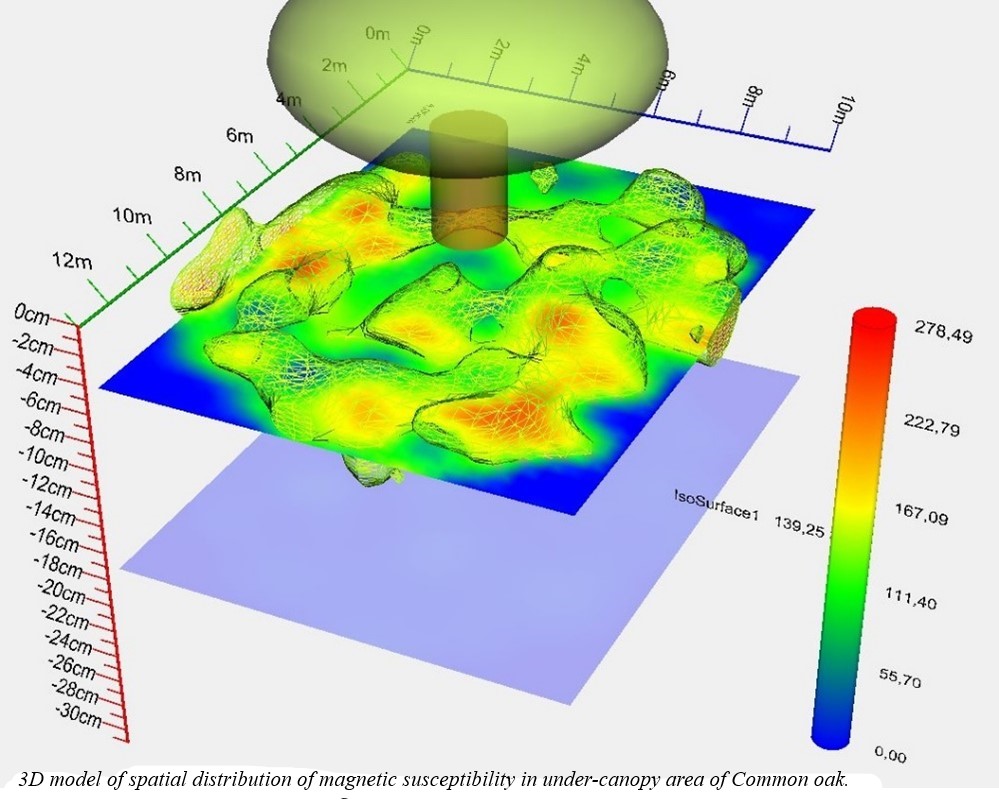Dense sample grid established in under-canopy area of Norway spruce.

Geophysical methods that use the magnetic properties of substances are becoming increasingly common in environmental research. The coexistence of magnetic particles and individual elements in the deposition of atmospheric dusts allows the detection of these pollutants after they have fallen to the ground surface and migrated to the upper soil horizons. Trees play an important role in the transport of pollutants from the moment they are captured from the atmosphere by the needles/leaves until they are distributed in the soil. The main objective of the project was to use magnetic and geochemical methods to track the distribution of dust loads in the soil by the main forest species in Poland (i.e. pine, spruce, oak, beech). Dense measurement grids placed under the canopy of the trees and a large number of samples collected in the form of soil cores allow for a detailed magnetic analysis showing the spatial distribution of dust load among individual tree species. Based on the collected 1086 soil cores and 32 580 magnetic measurements, three-dimensional models of the distribution of magnetic particles were created for each of the tree species on four different research plots. The results showed that although the differences in the amount of dust pollution among the individual tree species growing in the same area are small, the differences in the distribution of these pollutants in the topsoil are pronounced.
The research carried out is the first in the world to have detailed the distribution of magnetic particles in the soil using three-dimensional models. Nowadays, magnetometry is successfully used in the study of various elements of the environment. In many studies using soil magnetometry, the research objects are large-scale industrial and urban areas or individual soil profiles on a small scale. This project took a new direction in magnetic research at the mesoscale, considering the role of a specific research object, namely a single tree. The selection of this type of research object in the project means that the results obtained are not only relevant in the context of soil science and geophysics, but also for forestry and selected branches of agriculture, where geophysical methods have so far been used only to a limited extent.






